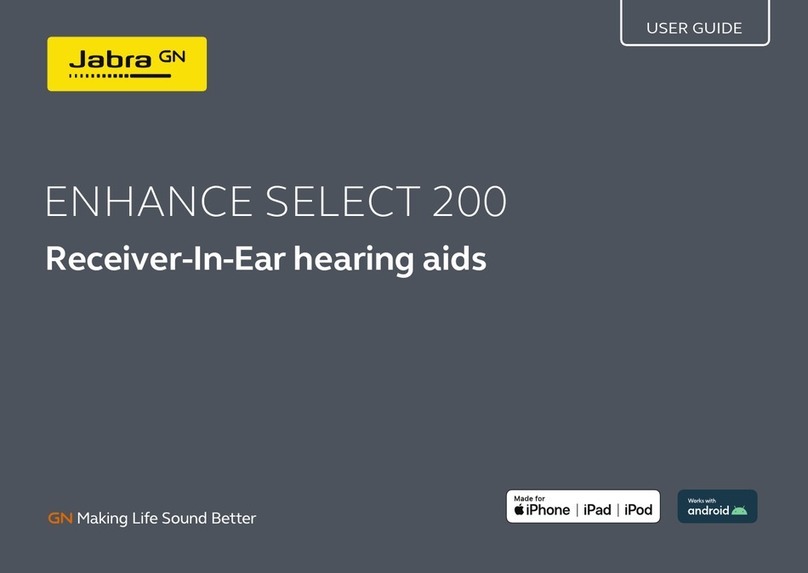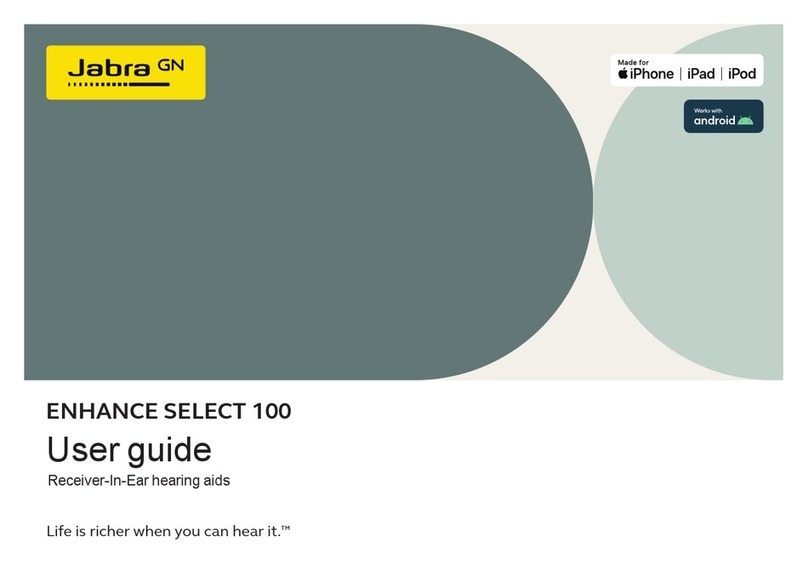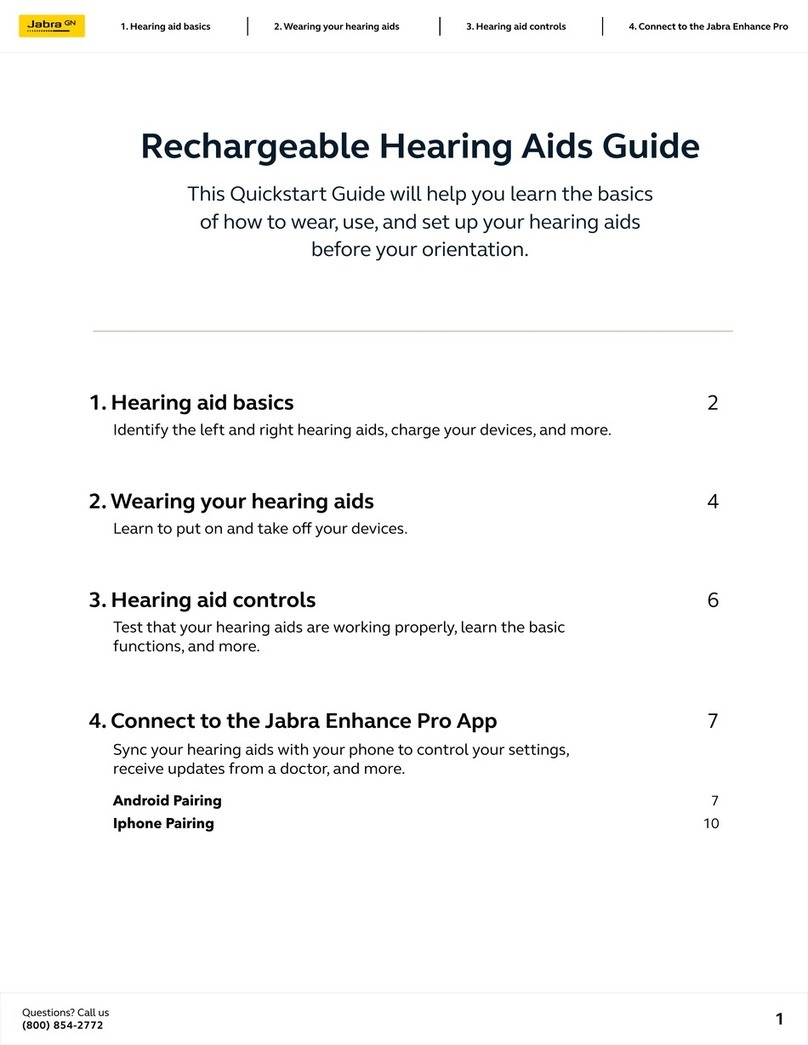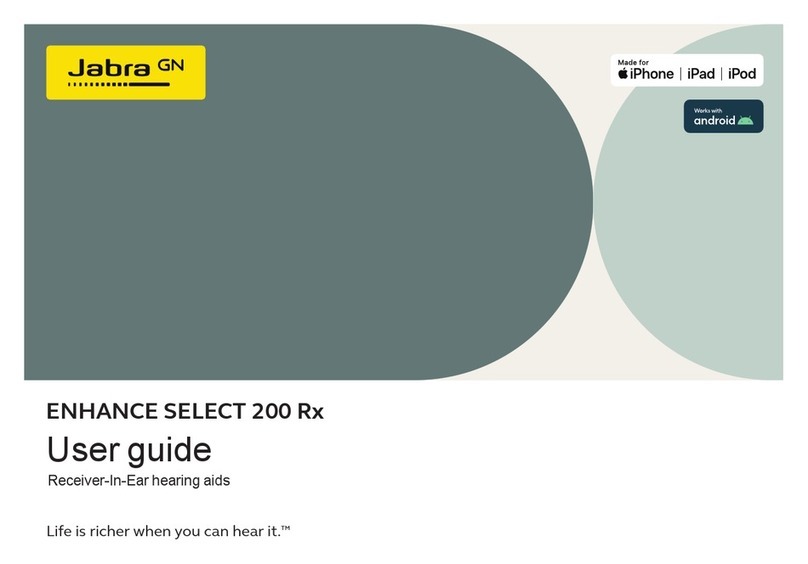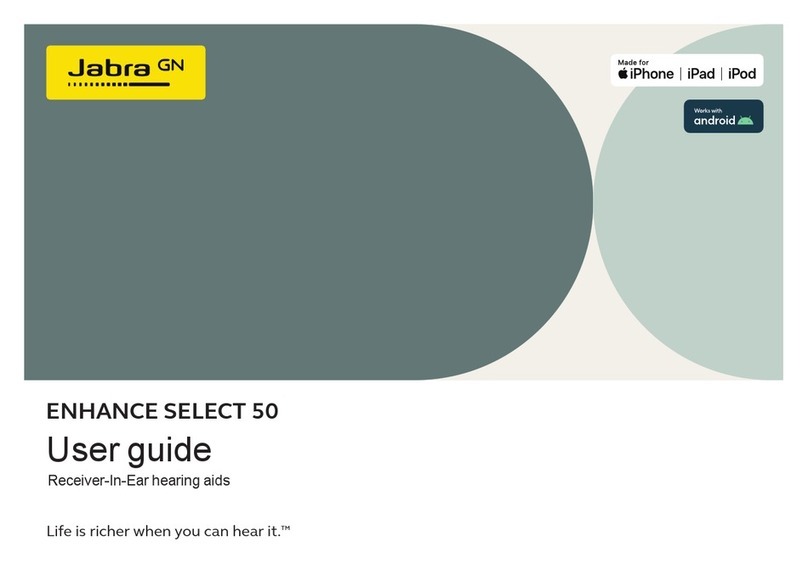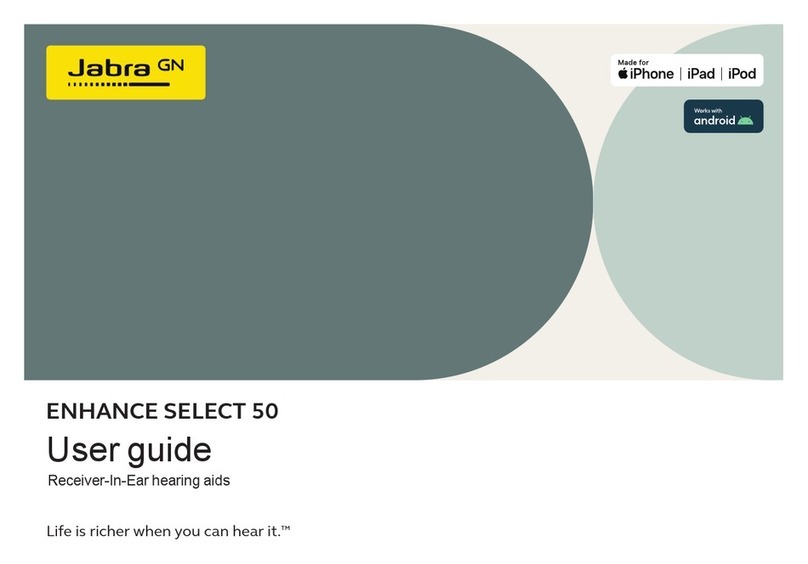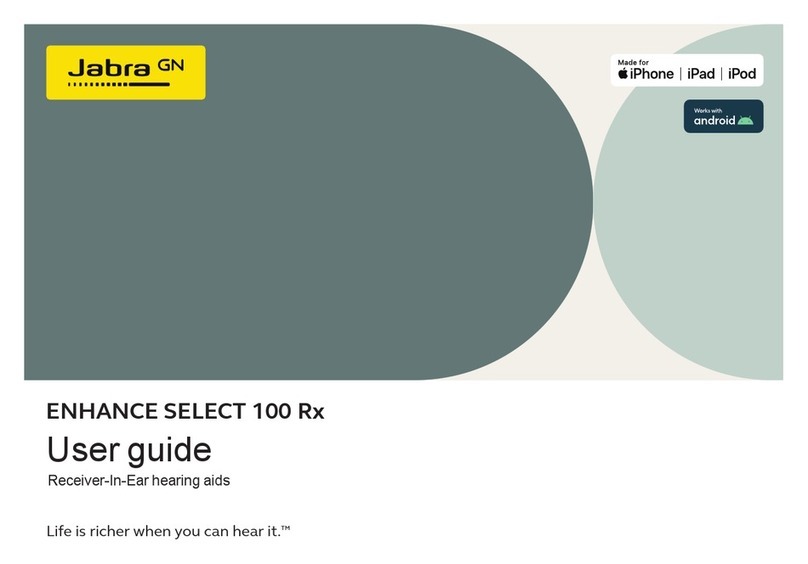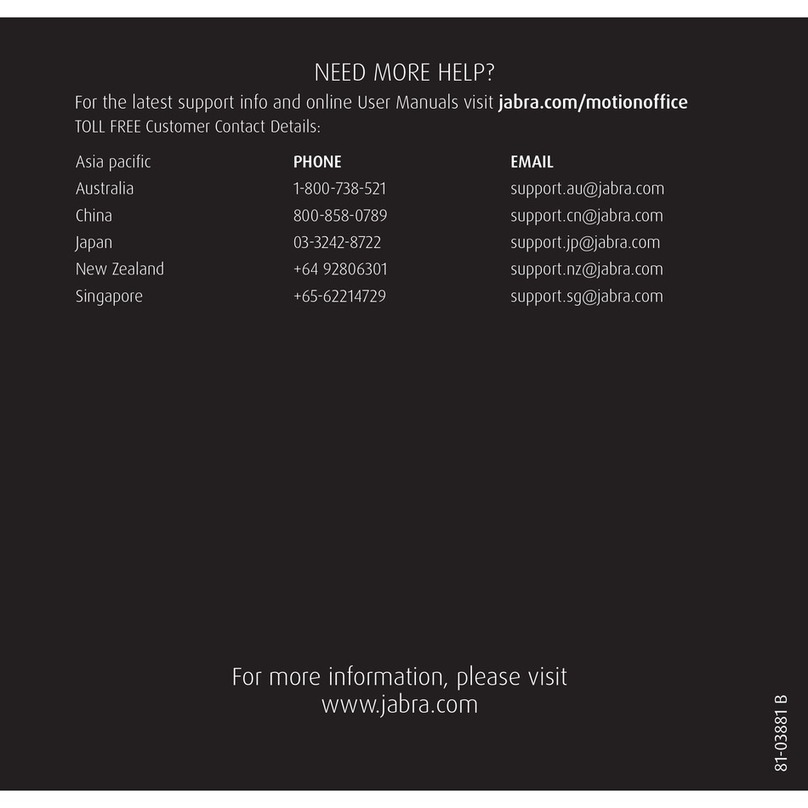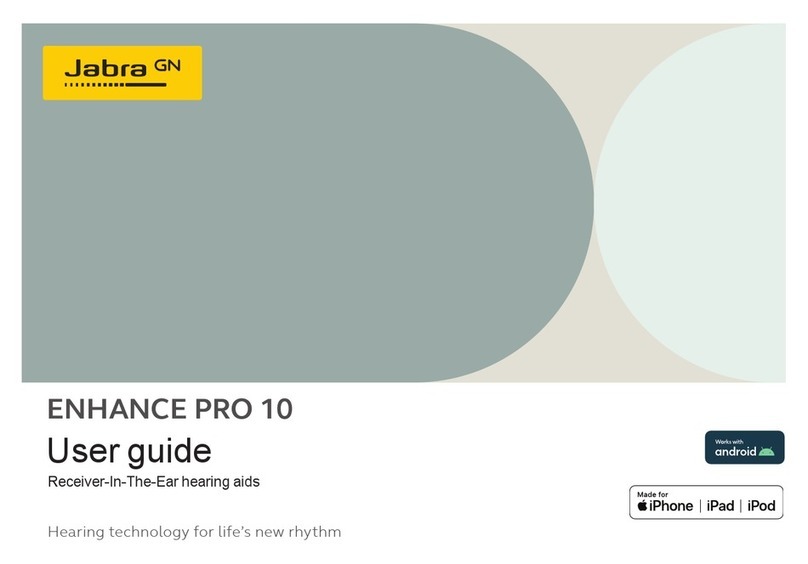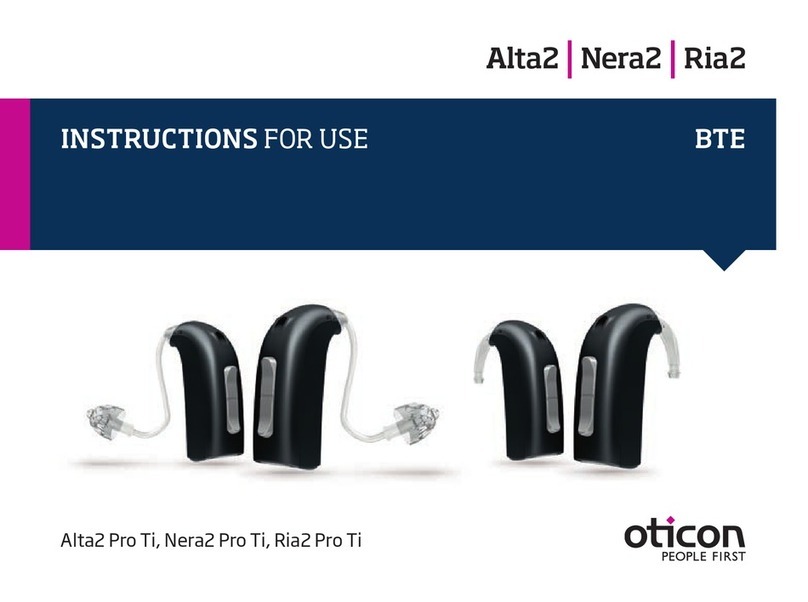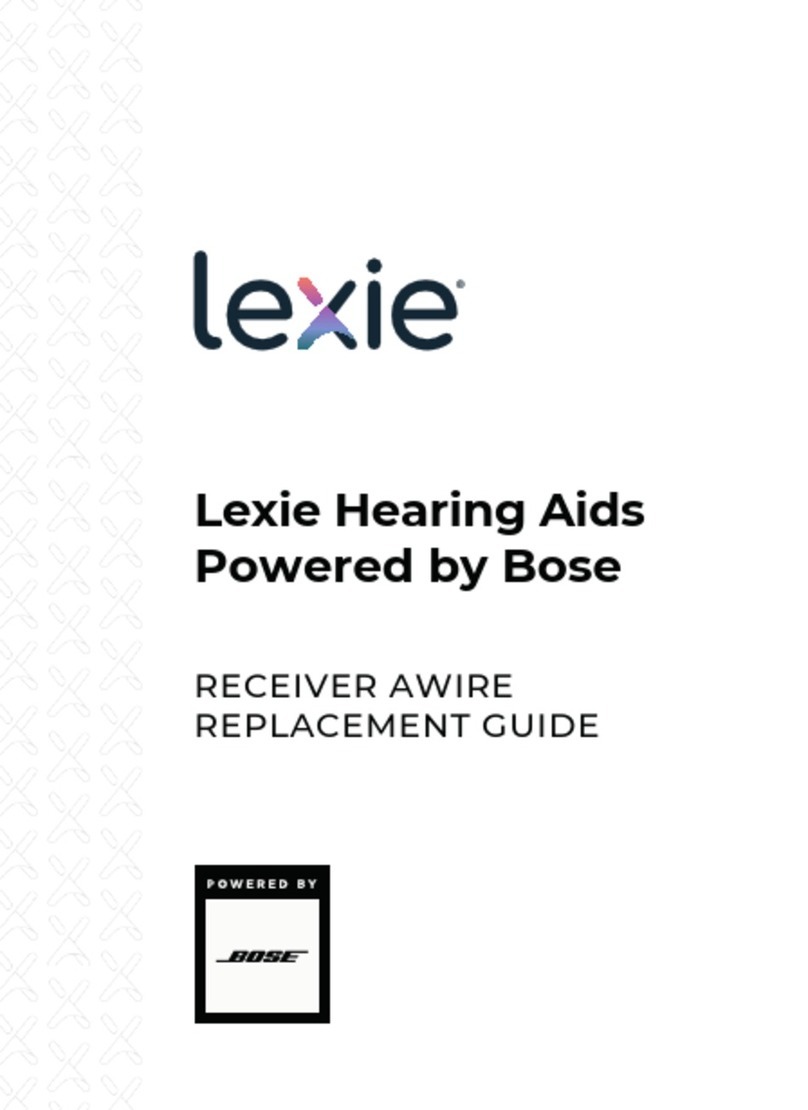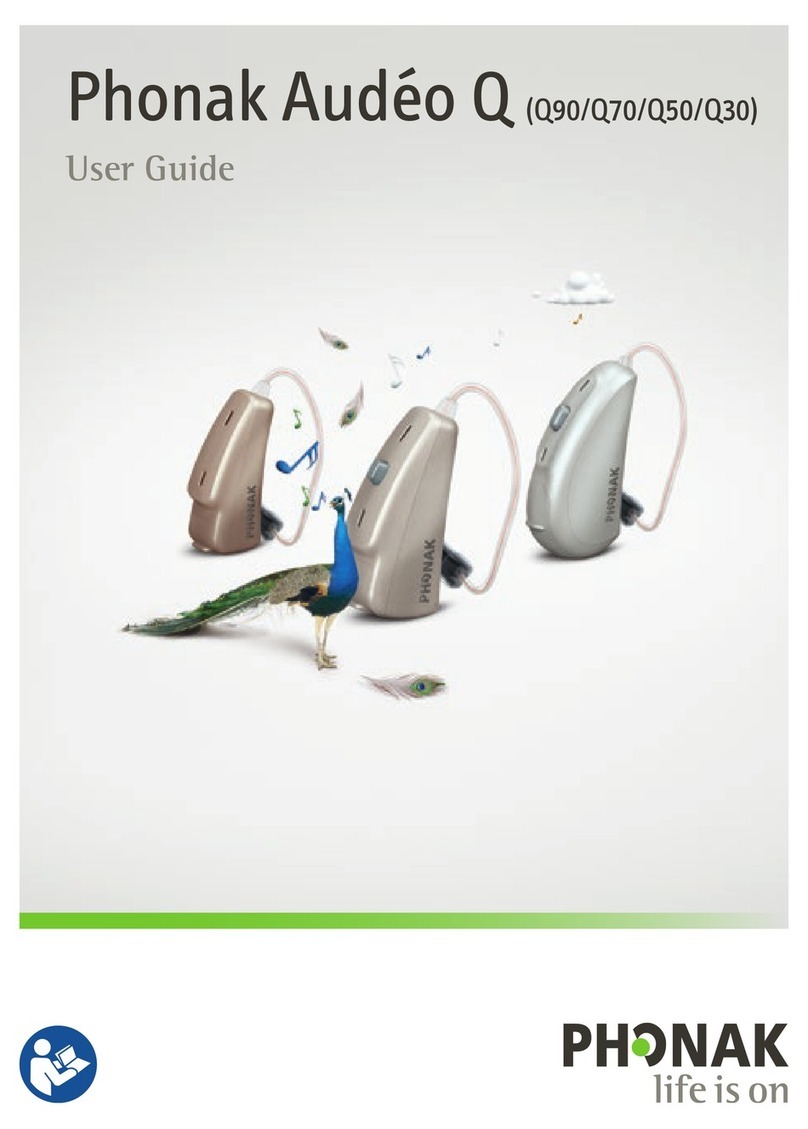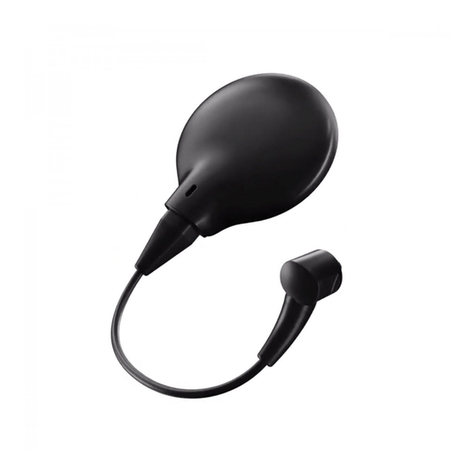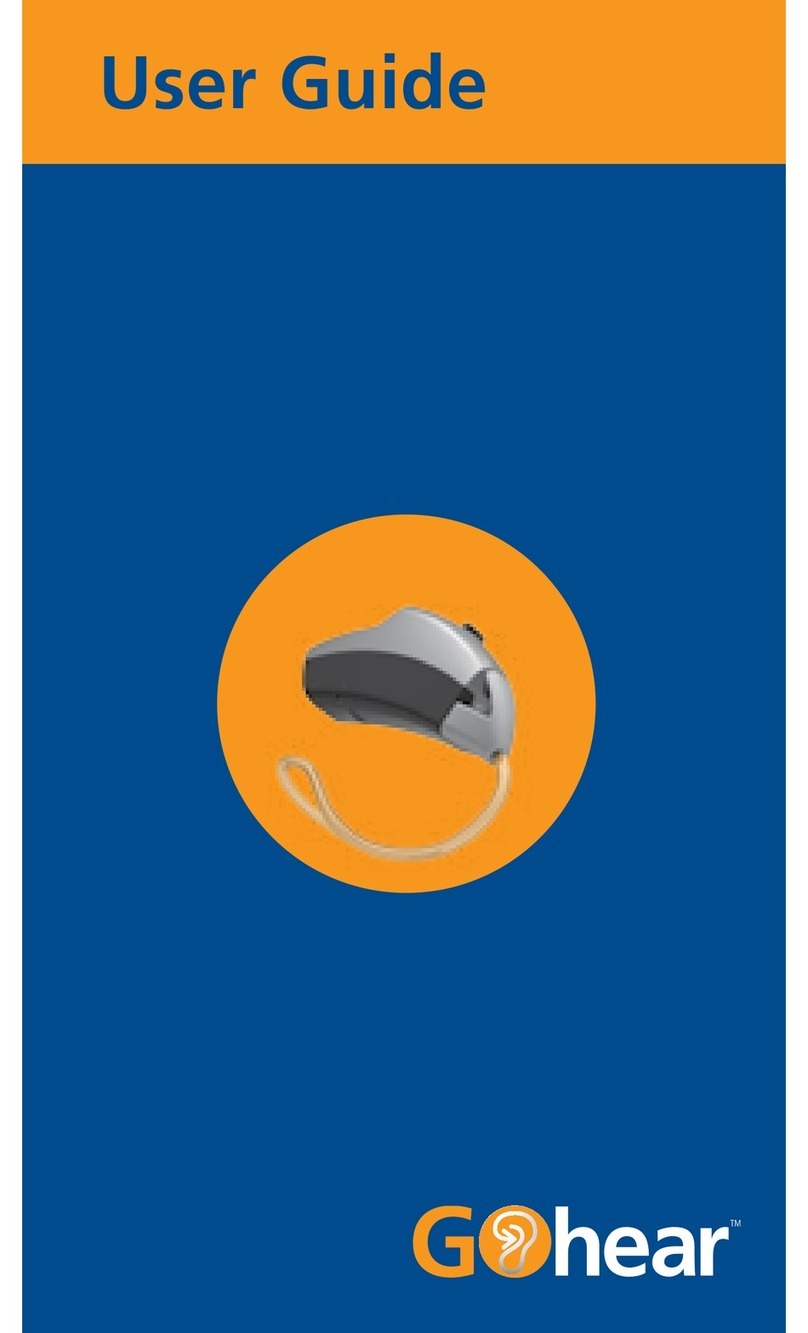
You might need medical help if a piece gets stuck in your ear
If any part of your hearing aid, like the eartip (dome), gets stuck in your ear, and you can’t easily remove it
with your fingers, get medical help as soon as you can. You should not try to use tweezers or cotton swabs
because they can push the part further into your ear, injuring your eardrum or ear canal, possibly
seriously.
NOTE:
If you remain concerned, consult a professional
•If you try this device and continue to struggle with or remain concerned about your hearing, you should
consult with a hearing healthcare professional.
What you might expect when you start using your hearing aid
•A hearing aid can benefit many people with hearing loss. However, you should know it will not restore
normal hearing, and you may still have some difficulty hearing over noise. Further, a hearing aid will
not prevent or improve a medical condition that causes hearing loss.
•People who start using hearing aids sometimes need a few weeks to get used to them. Similarly, many
people find that training or counseling can help them get more out of their devices.
•If you have hearing loss in both ears, you might get more out of using hearing aids in both, especially in
situations that make you tired from listening – for example, noisy environments.
4FDA warnings and cautions
